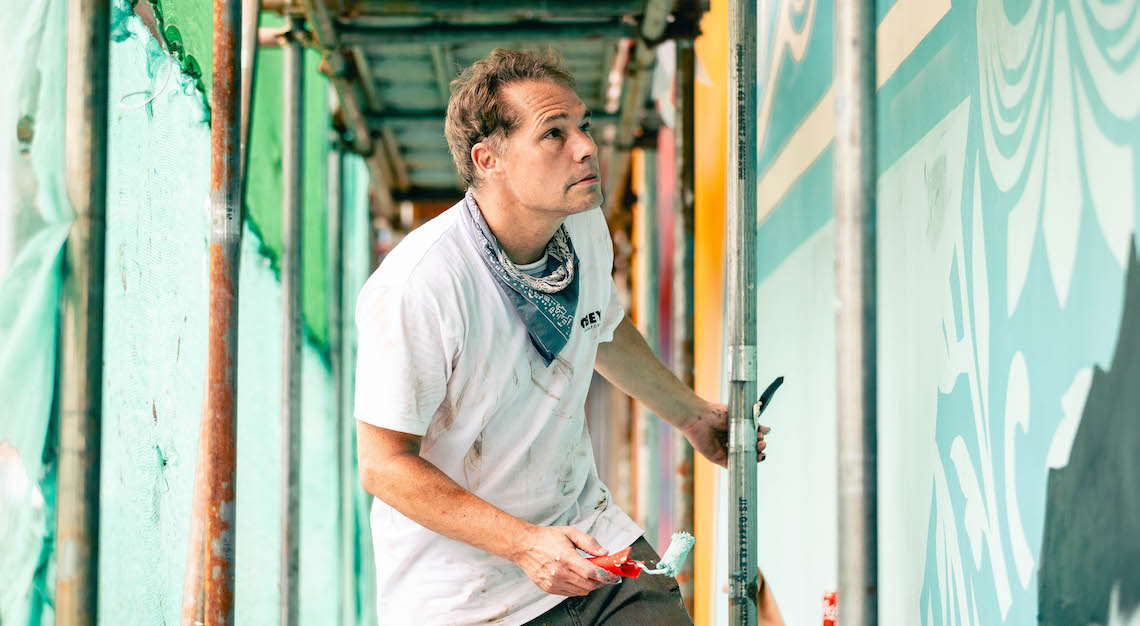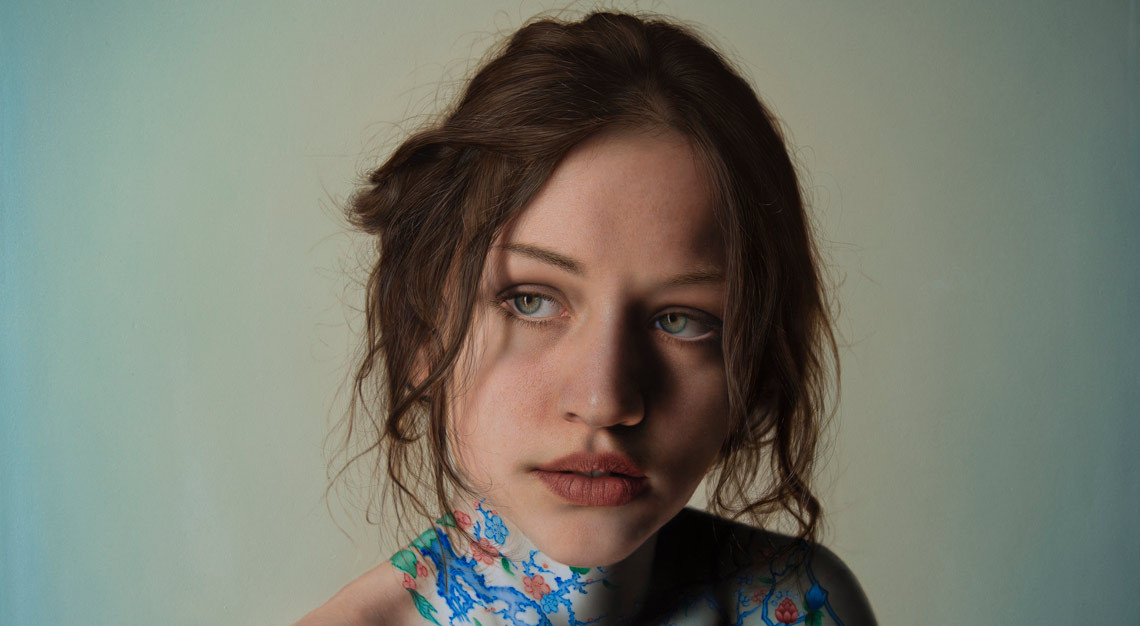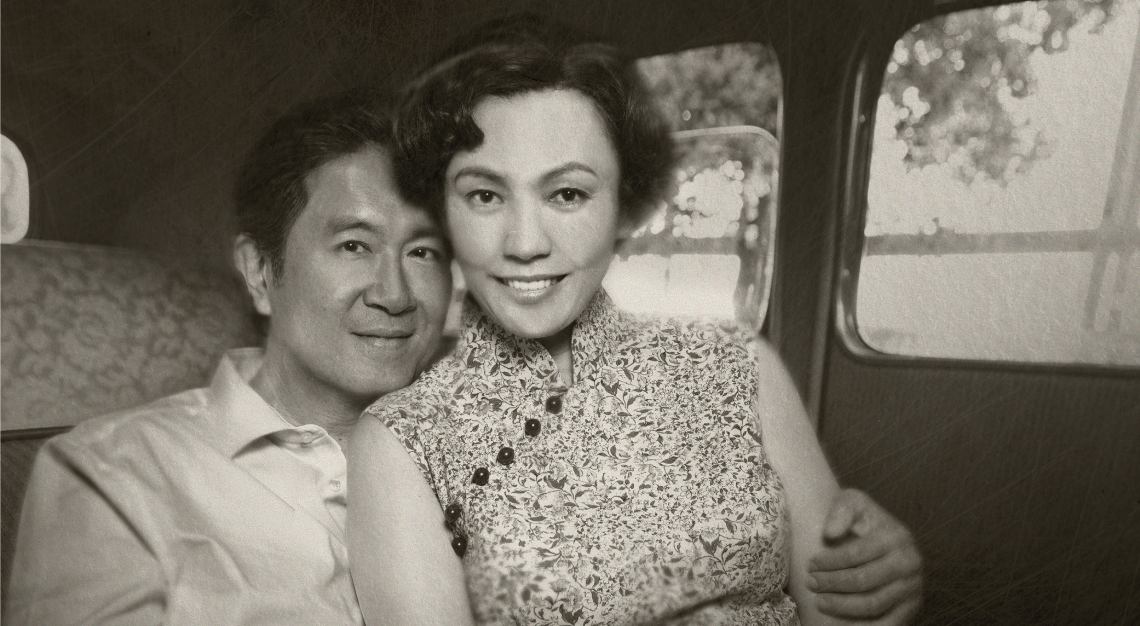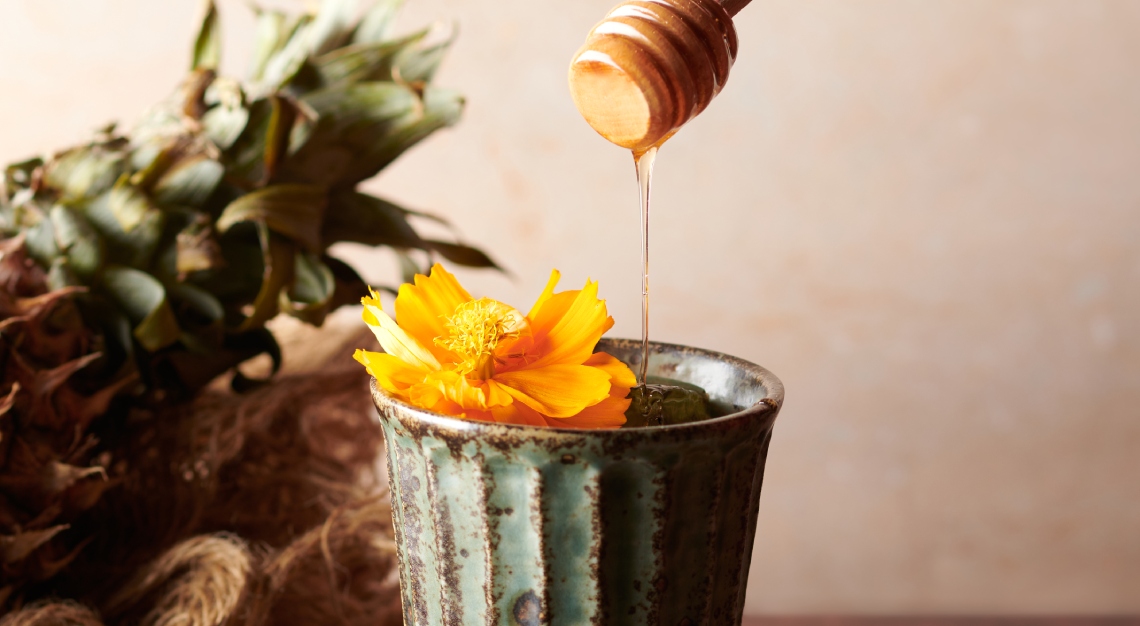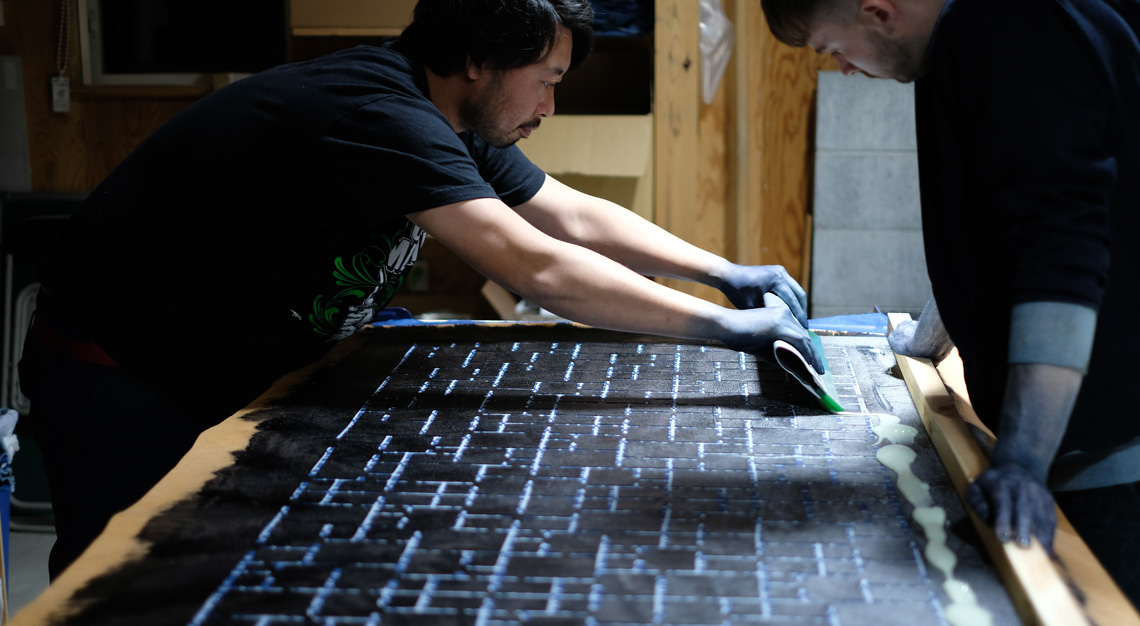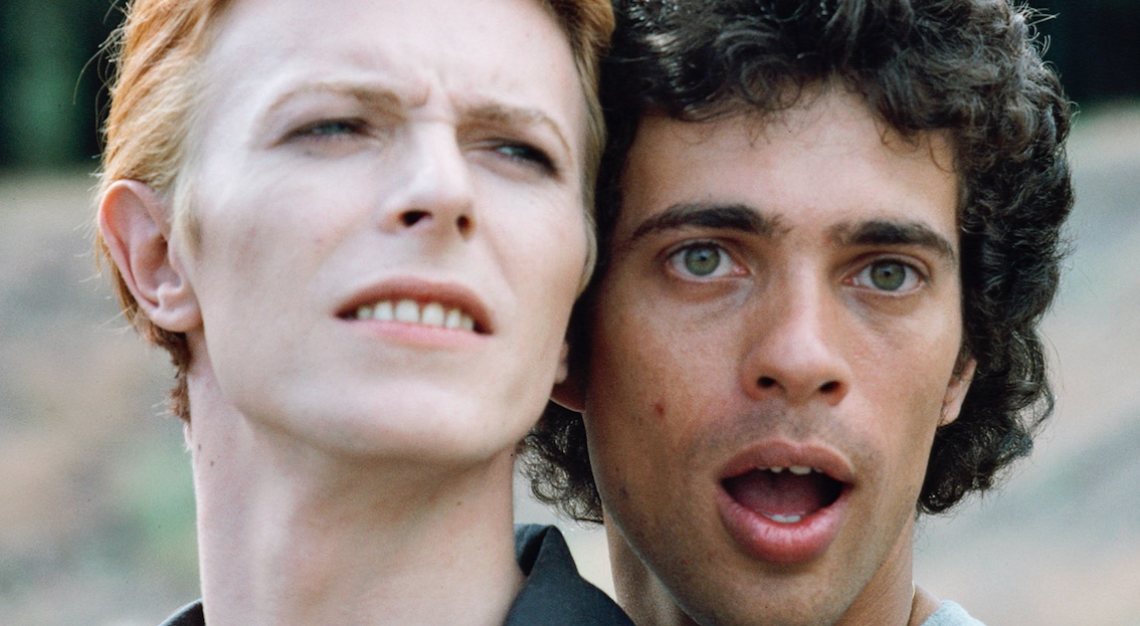Shepard Fairey, the celebrated American street artist, graphic designer, activist, and visionary behind OBEY Clothing, brought his powerful artistry to the shores of Singapore
Renowned for his distinctive visual style characterised by bold geometrical motifs, Fairey’s journey from the skateboarding scene to global stardom has been nothing short of extraordinary. His initial recognition stemmed from the iconic Andre the Giant Has a Posse street art campaign, and his evolving artistic vision, synonymous with hope itself, achieved further international acclaim through the iconic Hope poster during Barack Obama’s 2008 presidential campaign.
Fairey’s recent debut solo exhibition in Southeast Asia, titled The Future is Unwritten, was poised to captivate a fresh audience in Singapore. On display at Opera Gallery, it underscored his belief in art’s transformative power to ignite change and forge a better future. In a world often marred by uncertainty, his works seek to kindle empathy and harness the power of hope, inviting viewers to confront the turmoil far too often concealed beneath the surface. Transcending overt social and political narratives, his art delves into deeper symbolic themes centred around the unity and interconnectedness of humanity.
We caught up with him to delve deep into his artistic philosophy, motivations, and steadfast commitment to activism, offering readers a closer look at the driving force behind his creative journey.
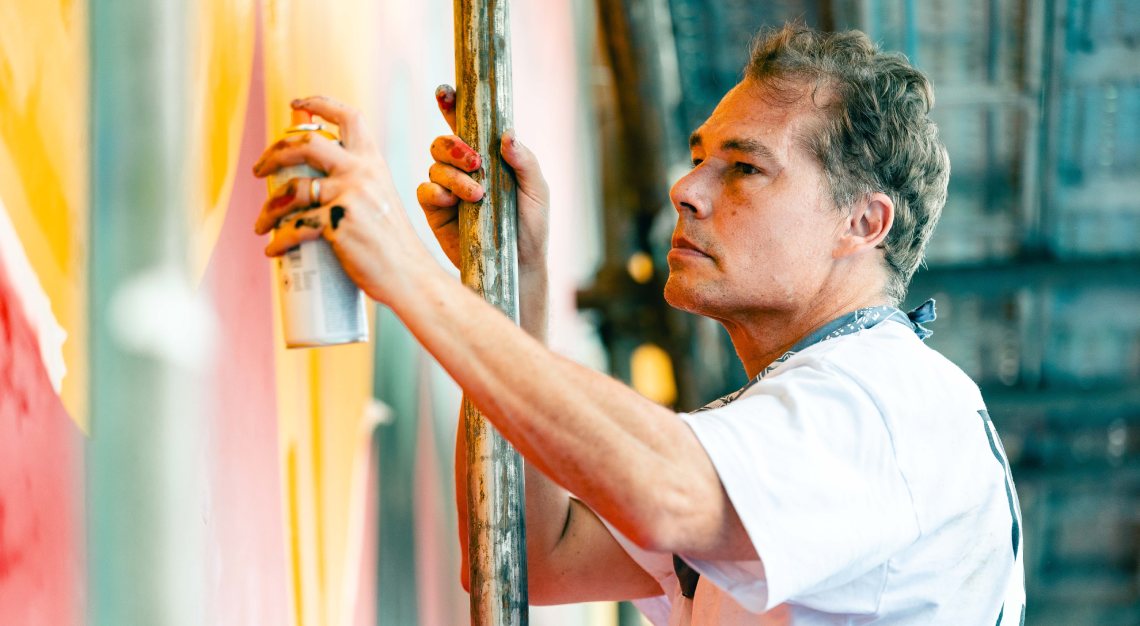
What is it like to be you?
Well, I don’t know what it’s like to be anyone else. I would describe myself as being very driven to make art, to be creative, and to address things in the world that matter to me. What’s it like to be me? It’s intense. I’m pretty intense. But I also feel very fortunate. I feel very lucky to be creative for a living. I feel lucky that I work with lots of amazing people. I feel lucky that I’m married to someone who’s a great partner in life and business.
What do you mean by intense?
I feel like there’s no time to waste. Some people enjoy not doing much. I get very restless when I’m not creating. I have gotten a little bit better about taking some time for myself, spending time with my wife and my kids, and going on vacations occasionally. But I’m very intense about my work. My work also gives me joy, so you could also call that intensity ‘passion’. There’s a balance. When you look at the social issues that I’m addressing in my work, a lot of them are heavy things that the whole world is facing, that all of humanity and the planet are facing. Sometimes, the weight of that is very intense. I feel an obligation to use my tools to try to solve problems, address them, affect how people think about things, and affect the direction that culture is going in. That has an intensity to it.
Can you tell me more about how you use art as a tool to address these social problems?
A lot of people find that the scale of the problems the world is facing is depressing or challenging. What I like to do with my art is make sure that the pictures have some beauty and appeal, so that they can draw people into looking at these issues in a way that they can digest, that doesn’t just overwhelm them and make them want to look away. If you look at these artworks, you can see that my approach frequently uses sympathetic portraits of people who make you curious about what they’re thinking or what their goals are.
I also use symbols, colours, and patterns that I think are appealing. I weave my messages into all of that so that there’s a visual power that people are attracted to. Hopefully, they’ll look at some of the ideas and process them as part of the joy of absorbing the visuals. It’s not all that different from how musicians—whether that’s John Lennon, Bob Marley, or Public Enemy—might make a song with a good beat and melody, but also lyrics that could be challenging. I’m using the same approach, but with visual art.
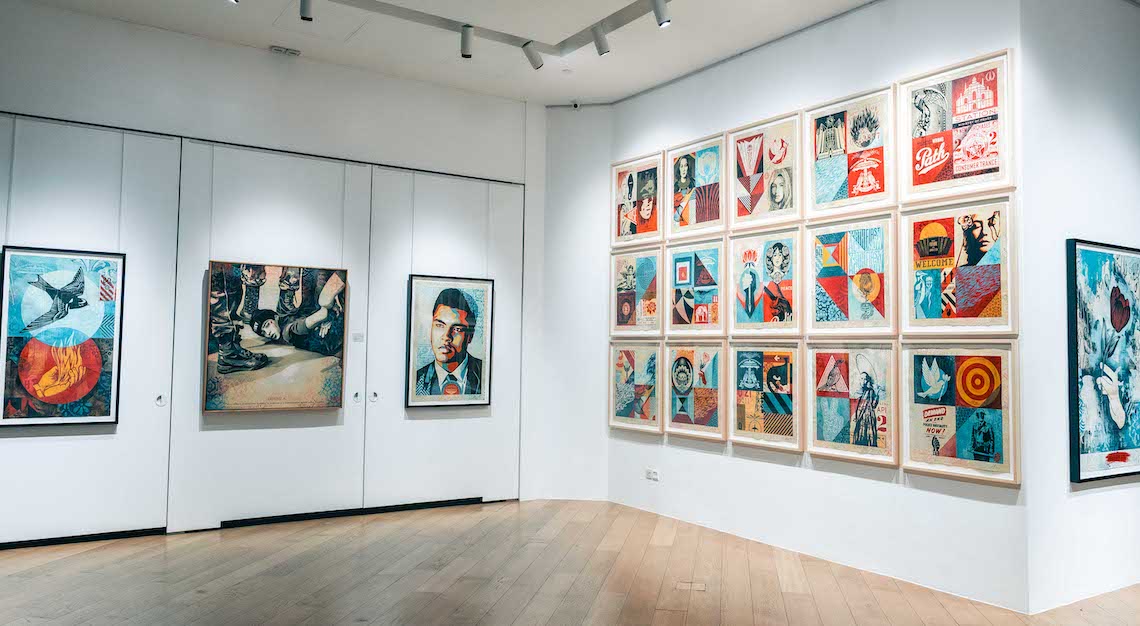
Do you approach art systematically or intuitively?
It’s a mix of both. I think that art is in this magical zone. Part of it is technique, but part of it is almost like alchemy—making something special from ingredients that aren’t that special. I’m experimenting all the time, looking at art history, reading, and listening to music. My inspirations come from a lot of different places. I’ve done a lot of portraits of my wife, who’s always a joy to illustrate. All of these ingredients can be combined in any number of ways. Sometimes, as I’m experimenting, a combination that I hadn’t thought of reveals itself. So I think that it’s important to be open to experimentation and evolution. Sometimes, if I’m stuck on one piece, I’ll move to a different piece. In thinking about the different piece, a solution for the other piece emerges. Focus is great. But if that leads to a dead end, expand to something else. A solution will be triggered through experimentation. For me, it’s just constantly working. This usually means that I’m never paralysed creatively. Things are always developing, always moving.
There’s a wonderful, dynamic logic to it. Has your philosophy or approach towards art changed throughout your career?
When I was younger, I was more antagonistic and negative. I’ve become more positive. When I was younger, I looked at all the things about the world that I didn’t like. I wanted to say that I don’t agree with that, I’m better than that, and anyone that disagrees with me is screwed up. Now, what I’ve realised is that there are a lot of people who are good at heart, but have been led in the wrong direction by bad forces. Instead of being angry at them, I need to be more understanding, more sympathetic, and try to find a way to communicate. Instead of calling out what I thought was evil, my approach now is to look at ways to communicate with people, even if they’ve been manipulated or misled in a direction I disagree with, and find some common ground so that they can evolve. That’s been an important part of my evolution.
How would you interpret the title of this exhibition, The Future is Unwritten?
It’s a quote from one of my heroes, Joe Strummer, the singer of the Clash. I’ve known this phrase since I was a teenager. It’s something that has become more appealing to me as I’ve gotten older because I realised that my work is about encouraging people to find their voice and power. Rather than just being spectators, they can play a role in shaping what the world is like. We all have our own opportunity to make a mark on the future, to write the future. Even when things are going in a bad direction, amazing innovation happens when humans set out to collaborate and solve problems. I want to impress upon people that they have choices about how to shape the future, and that they have more power than they might realise.
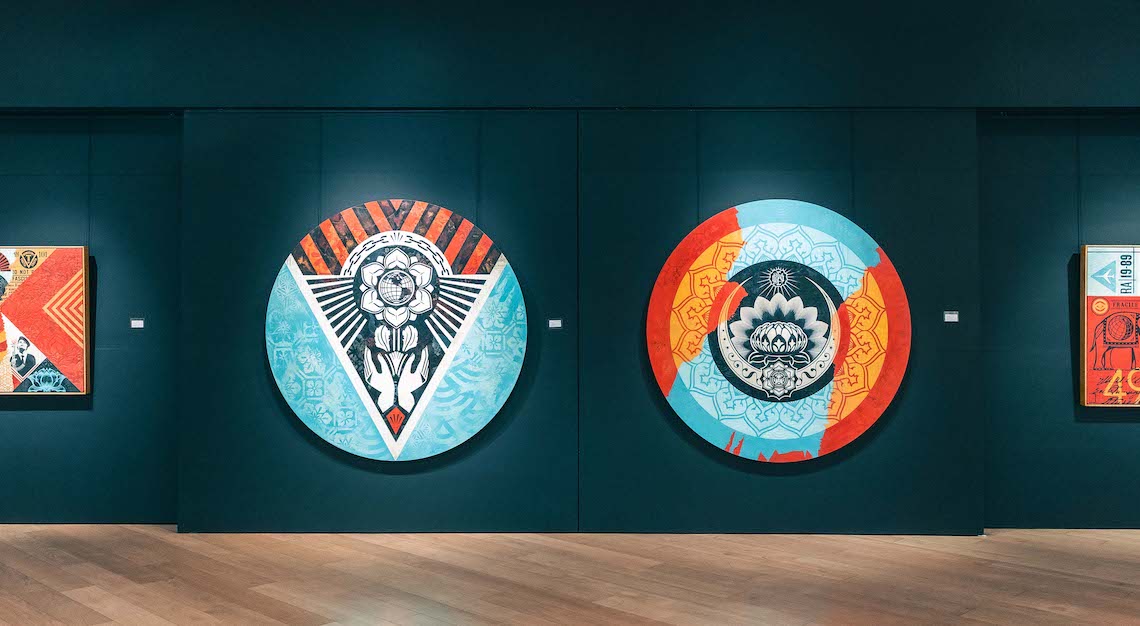
Are there any ideas that have been dominating your mind recently?
Climate change and environmental destruction have been big issues for me because of the hardship it’s going to create for people who will be displaced by rising waters and the animal species that are affected. No matter what your political beliefs around other issues are, it’s undeniable that other than people who live in certain parts of the world or have a lot of money, everyone will have to deal with the consequences of climate change. As a parent of two teenage daughters, I feel that it’s unfair to them to leave the planet in a worse shape and compromise their future with things that my generation and previous generations have done.
My work is generally about social justice. Everyone defines that a bit differently. For me, it’s about racial equality, gender equality, equality for people of all sexual orientations, and narrowing the gap between the rich and the poor. I know, from being poor for many years of my career, that once you make money, it’s so much easier to make more. There needs to be a safety net for people who are at the bottom economically. There also needs to be checks on corporate power in meddling with politics, which I see in the United States all the time. These are things that I address in my work. A lot of it comes down to who has power and whether they are victimising other people with that power. To me, all these are concepts of fairness and justice. I want to make the world more just for people.
Something that stood out to me in your artwork is the colour scheme. Is there a reason why you feature mostly primary colours?
Yes. I started early in my career using mostly red and black because I was poor and it was cost-effective to just use those colours, which could also grab people’s attention. Those are the colours that a lot of advertising and propaganda use as well. That worked for my budget, and for my ideas early in my career, I wanted to grab people and shake them visually. But as I started to address things about the environment, I realised that using blues and yellows felt more positive and connected to the earth, the air, the water, and the sun. These colours were important to incorporate. Now, this colour scheme is something that I’ve been using for about five years. I feel that it’s very well-balanced between masculine and feminine, positive and negative.
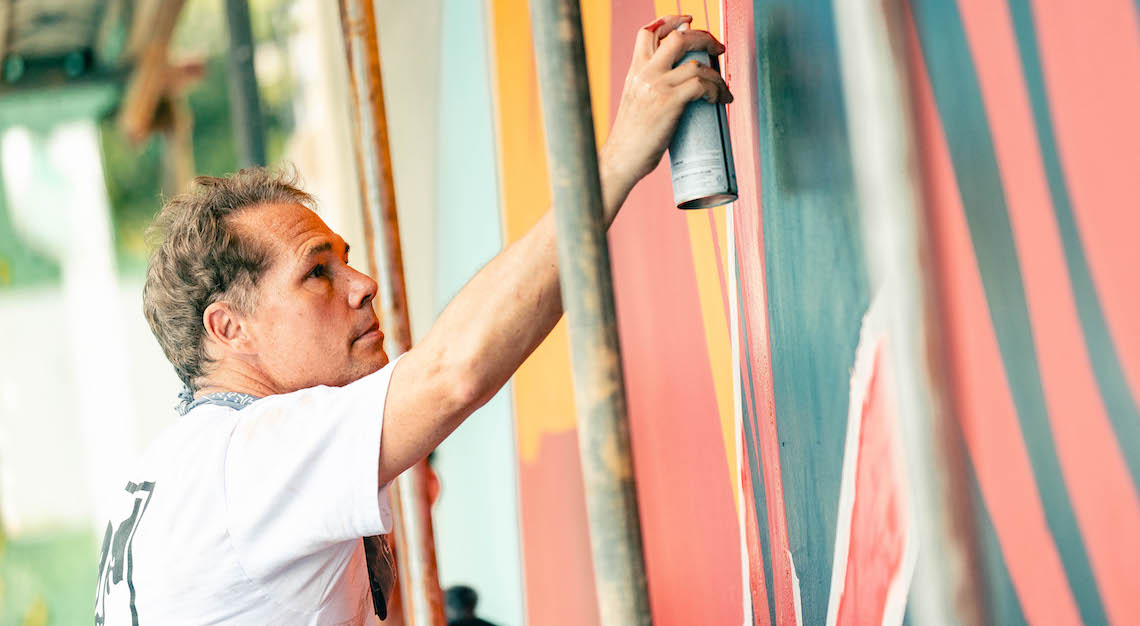
Can you share more about the street art project that you recently completed in Singapore?
It’s a mural called Mosaic of Peace and Harmony. There’s a portrait of a woman holding a flower. It also has a dove with a flower, growing out of barbed wire, in its beak. My logo is mixed with the flower and the triangle. These concepts of peace and harmony are very important to me. What I hope to achieve with this image is for someone to look at it and say, “I like the way this looks. What is it trying to say?” They’ll see some of the symbols and research more of my work. I can’t put a more confrontational image on the streets here, so this can be a gateway to a lot of my other work.
Having large-scale art in public is great for enriching people’s lives. I think that public space should be used not just for commercial signage, advertising, and government signage, but also for beauty and expression. There are some nice murals in Singapore, but most of them seem to be graphics for businesses, rather than what an artist is doing to share their ideas and visuals with the world. I hope that if people like this, there might be inspiration and opportunities for artists. Public art is very important to me. While making these canvases and nice art pieces is great, it’s a very small audience. But hundreds of thousands of people will see public art. Art should be more accessible and democratic, so I’m very happy to have the mural here.
Any advice that you’d give the generation of young artists working in these uncertain times?
I know that a lot of young artists are probably concerned with how AI is going to affect creative industries. I can understand that concern, but I also think that there could be certain opportunities with AI. I think about all of the different digital tools that have developed during my lifetime. When I started art school, the computer wasn’t even a design tool for most people yet. Now, it’s the standard design tool. I think that people need to remember that tools can accelerate the technical side of creative processes. Tools just can’t make a result that has a special human touch without the added input, or the added creativity of the artist or the designer.
So, as an artist or designer, it’s extremely important to make sure that within the sea of imagery and media, they still make something that is unique. Making something special doesn’t mean that no one’s ever seen anything like it before. It just means that it has some unique twist from that artist or designer that makes it stand out from the rest. Also, it’s extremely important to believe in one’s unique vision and constantly push for it. Rather than chasing the trends of what other people are doing, it’s really important to build your own career and find your unique voice. Some people give up and copy others if they do something that isn’t trendy and no one responds to it. But they’ll always be behind. They won’t be leaders if they work that way. I think that having some tenacity and courage to keep pushing your own ideas is very important.
Lastly, give us a short sneak peek of what you’ll be working on next.
I’m doing a new body of work that is an evolution of my aesthetics, while still being recognisable as mine. It’s with a series of galleries that usually feature photography. A lot of the work that I do is based on collaborations I’ve done with photographers, my photographs, or photographs that I’ve licensed. But I’m interpreting and transforming them. The work that I’ll be doing throughout 2024 with that series of shows will be something that people haven’t seen from me.
